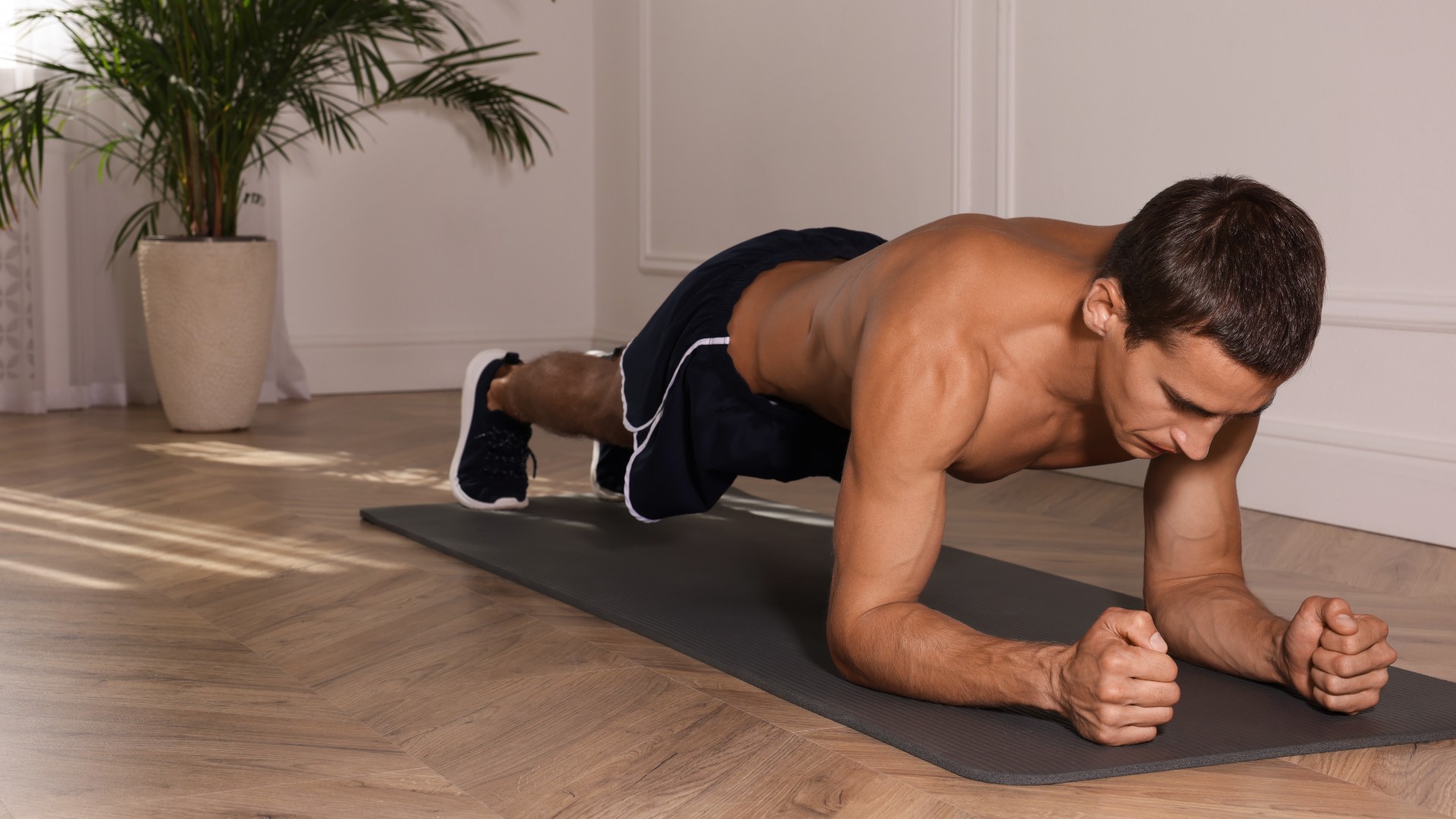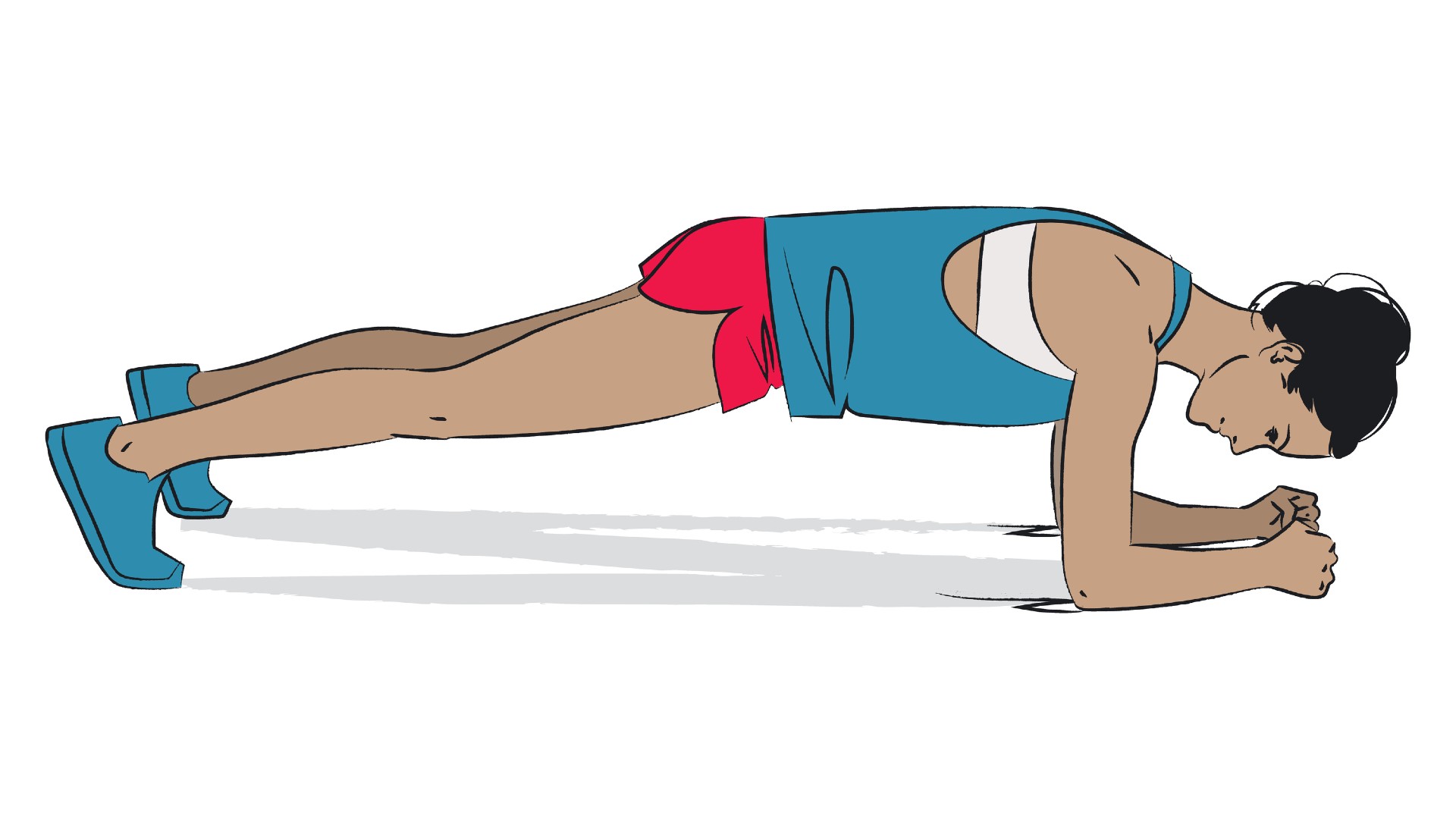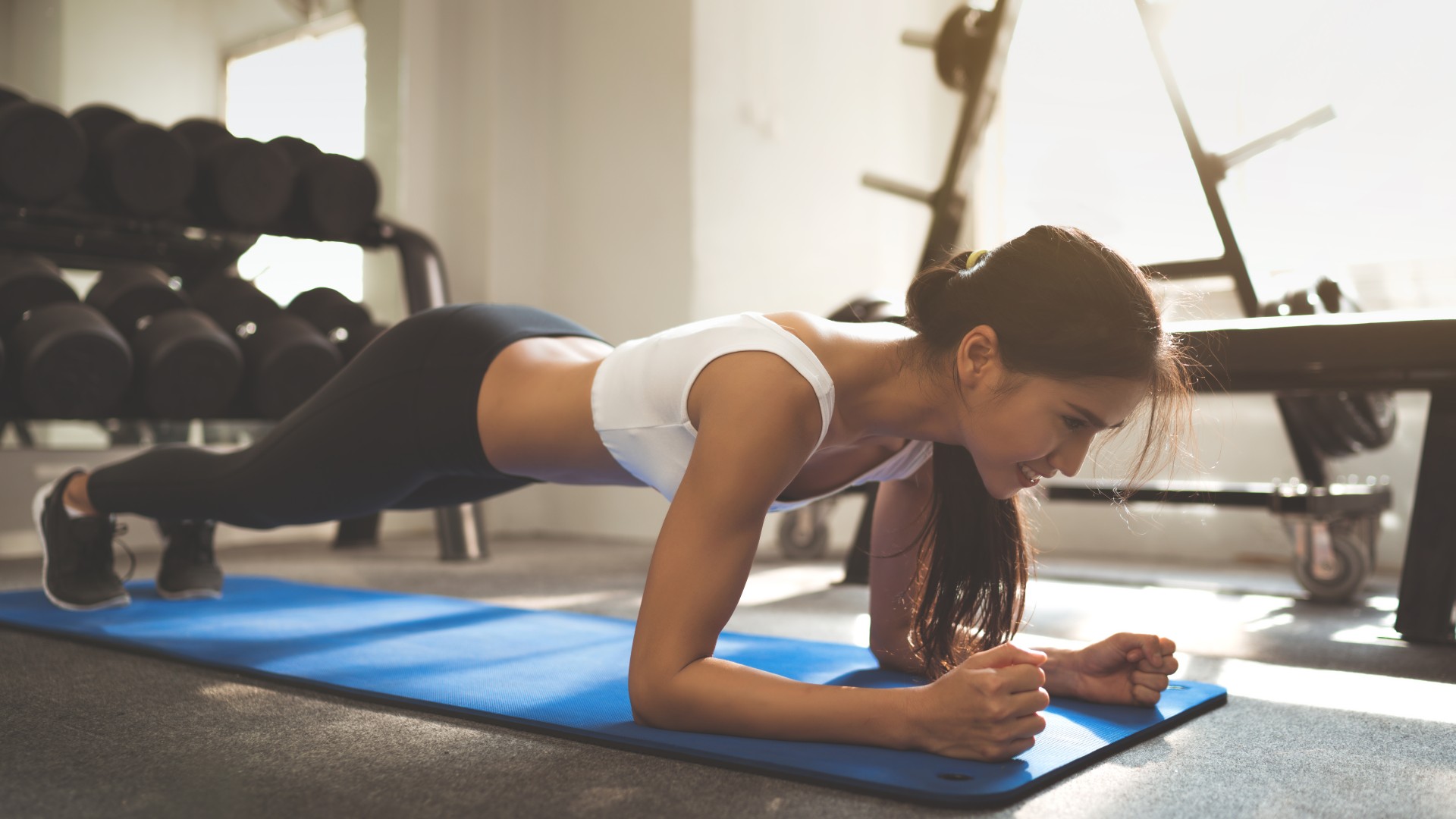
The RKC plank, or Russian plank, is the sister plank you didn’t know you needed or wanted. And there’s a reason for that (it hurts), as I was about to find out from doing them every day for a week.
Unlike some other plank fitness challenges we’ve recently done at Tom’s Guide, this one measured time spent rather than reps. So, while I didn’t accumulate 100 reps of the exercise, I did rack up a hefty 10 minutes of RKC planks each day for a week.
If you’re unfamiliar with the plank variation, it got its name from its inventors — Russian Kettlebell Challenge — and is arguably the spiciest and most effective plank variation exercise out there. Increasing the intensity of the hold compared with a standard plank could build a stronger core and activate more muscles in a shorter time.
If you want to step up your plank game, grab one of the best yoga mats for supporting limbs during a plank, and read on for what happened.
How to do RKC planks

The RKC plank increases load using isometric contraction (without flexing or extending muscles), requiring you to squeeze as many muscles as possible, hard. Unlike a regular forearm plank hold, reaching anything over 20-30 seconds is impressive.
During this variation, you’ll focus on squeezing specific muscle groups. Here’s a checklist:
- Start in a forearm plank position with elbows stacked underneath shoulders, and armpits and toes tucked under. Maintain a straight line from head to toe without dropping hips
- Screw your shoulder blades back and down and squeeze your fists tight
- Externally rotate shoulders
- Squeeze your glutes, then quads, and contract legs and feet toward each other
- Drag your elbows towards your toes and toes towards elbows as if to perform a pike (see how in this calisthenics workout) without moving your body
- Tuck everything under (like an upside-down hollow hold), which creates a tiny rounding in your upper back.
This intense variation looks similar to a forearm plank, but everything comes down to contracting and squeezing more muscles — without moving. Your hand position will move from parallel to fists turned in.
Get instant access to breaking news, the hottest reviews, great deals and helpful tips.
I did 10-minute RKC planks every day for a week - here's what happened to my core
Here’s how it went.
Day 1
This exercise is far harder than your standard issue forearm plank, and the payoff includes more bang for your buck in a shorter time. I approached it using a 20-second on and 10-second off format for a whopping 20 rounds total (10 minutes).
I focused on working through the ‘squeezing checklist,’ as I called it, setting up limb by limb and running back through the checklist as I held position. It was probably the toughest plank challenge so far when I think about corrective form and posture, and considering I did 90 commando planks every day for a week, that’s saying something.
Days 2 and 3
I train regularly, but after 10 minutes of RKC (or Russian) planks on day one, I felt everything, everywhere, all at once but especially in my core, which isn’t as surprising. The key squeeze checkpoints are to tense your fists, externally rotate the shoulders, then run down to the quads and glutes for a good squeeze, contracting your legs and feet toward each other.
After 10 minutes of RKC, I felt everything, everywhere, all at once but especially in my core
Once in place, the focus becomes pulling your toes and elbows toward each other, as if to perform a plank pike (see the video below), which requires the deeper core muscles to work hard. Although you won’t physically move, you’ll still activate major muscle groups, including your shoulders, chest, back, arms, core, lower back, glutes, and quads. You’ll also activate smaller, stabilizing muscles that often get neglected.
Days 4 and 5

By day four, I felt fatigued from the sheer effort of keeping everything switched on, especially my shoulders. I found it hard to keep my form on point without dropping the ball elsewhere. When I tuned into my upper body, my hips began to drop, but when I tuned into my lower body, my fists began unfurling.
It’s worth remembering that this feels very different from a regular plank hold. That’s why running the checklist over helps reactivate areas that might otherwise switch off. I noticed this mostly in my glutes, which I struggle to activate during most exercises (I find this glute workout helpful).
I also noticed how stilted breathing becomes with the extra effort. I focused on deepening my breath and utilizing diaphragmatic breathing — or “belly breathing” — which is more expansive than restricted chest breathing.
On every exhale, I practiced drawing my stomach in and driving my elbows and toes together. By day five, my core muscles were well and truly fired up.
Days 6 and 7
By day six, I finally began to find my flow, and conscious contraction felt more natural, although still tough to maintain. I decided to test my core strength by scrapping the format for the remaining days and aiming for maximum holds each time until I accumulated 10 minutes.
As I fatigued, these times got slightly shorter, but overall, I managed to maintain consistency. By day seven, I was relieved for this one to be over, but I felt like I’d significantly upped my plank game during the process.
Verdict
20 seconds feels significantly longer during Russian planks due to increased muscle activation and helps develop abs, improve posture, and strengthen and activate more muscle groups. Moreover, it builds endurance in a shorter time by creating maximum tension in the body and requires more from your external and internal core muscles to pull your elbows and toes toward each other.
Core strength is crucial for weightlifting exercises like deadlifts and squats and strengthens the muscles in your back that support the spine and protect from injury. If you plan to try them, start with 10-20 second sets for five sets and build as you improve.
More from Tom's Guide
- I did 50 hip dips a day for a week — here’s the results
- Forget running — this 20-minute walking workout boosts your metabolism
- I did 100 plank jacks every day for a week — here’s what happened

Sam Hopes is a level 3 qualified trainer, a level 2 Reiki practitioner and fitness editor at Tom's Guide. She is also currently undertaking her Yoga For Athletes training course.
Sam has written for various fitness brands and websites over the years and has experience across brands at Future, such as Live Science, Fit&Well, Coach, and T3.
Having coached at fitness studios like F45 and Virgin Active and personal trained, Sam now primarily teaches outdoor bootcamps, bodyweight, calisthenics and kettlebells.
She also coaches mobility and flexibility classes several times a week and believes that true strength comes from a holistic approach to training your body.
Sam has completed two mixed doubles Hyrox competitions in London and the Netherlands and finished her first doubles attempt in 1:11.
